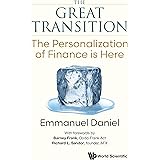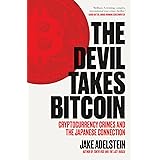The global financial landscape is undergoing a profound transformation, a theme powerfully articulated in the accompanying video. A significant issue being observed by macroeconomic experts and geopolitical analysts is the gradual but undeniable shift away from the US Dollar (USD) as the world’s primary reserve asset. This monumental change, often referred to as de-dollarization, is paving the way for a new era where “neutral assets” are increasingly sought after. The emerging solution, as highlighted by figures like Jack Mallers, involves a strategic rotation of national surpluses and export profits into assets such as gold and Bitcoin.
This evolving scenario suggests a recalibration of global economic power, with the BRICS nations (Brazil, Russia, India, China, and South Africa, along with their recent expansions) playing a pivotal role in accelerating this transition. These economies are collectively asserting their economic sovereignty by reducing their reliance on traditional Western-centric financial instruments, signaling a move towards a more multipolar monetary system. The implications of this shift are vast, touching upon everything from international trade to investment strategies, as the very foundation of global finance is being re-evaluated.
The Shifting Sands of Global Finance: A De-Dollarization Trend
For decades, the US Treasury bond was regarded as the quintessential world reserve asset, a bedrock of stability for international trade and national treasuries. However, as the video alludes, this status is now perceived to be eroding. Concerns about geopolitical weaponization of financial systems, coupled with persistent inflationary pressures within major economies, have prompted nations to reconsider their holdings. It is understood that a diversified portfolio of reserve assets offers greater resilience against economic shocks and political maneuvering.
Historical precedence shows that reserve currency dominance is not permanent; it shifts with global economic power and political stability. The British Pound Sterling, for instance, once held sway before being supplanted by the USD. Now, a similar transition is being witnessed, driven by a confluence of factors, including the rising economic might of non-Western blocs and a desire for greater financial independence. Countries like China and India, which have accumulated substantial trade surpluses, are believed to be at the forefront of this re-evaluation process, progressively reducing their exposure to US debt.
Why Nations Seek Neutral Reserve Assets
A “neutral asset” is essentially an asset whose value is not directly tied to the political or economic interests of a single dominant nation. The pursuit of such assets is driven by a desire for reduced counterparty risk and increased financial autonomy. When a nation’s reserves are denominated primarily in the currency of another geopolitical rival, its economic stability can be seen as vulnerable to external policy decisions or sanctions. This vulnerability is being actively mitigated by a pivot towards assets perceived as universal and apolitical.
For national treasuries, the objective is to hold reserves that are stable, liquid, and broadly accepted, yet free from the direct influence of any single government. This ensures that a country’s wealth remains secure and accessible, regardless of international political tensions. Diversification into truly neutral assets is viewed as a necessary step to safeguard national interests and foster greater global financial equity. The goal is to avoid situations where a country’s financial stability could be leveraged against its political independence.
Gold’s Enduring Appeal in a New Era
Gold, with its millennia-long history as a store of value, naturally comes to mind as a premier neutral asset. It has always been considered a universal currency, impervious to the whims of any single national government or central bank. Its intrinsic value, coupled with its limited supply, provides a hedge against inflation and currency depreciation. In times of geopolitical uncertainty or economic turmoil, gold traditionally acts as a safe haven, a reliable anchor in turbulent financial seas. This perception of gold is not new; rather, it is being revitalized and emphasized in the current global climate.
The physical nature of gold also contributes to its appeal as a neutral asset; it cannot be debased digitally or frozen by international sanctions in the same manner as digital accounts or foreign bonds. Its value is universally recognized, making it a highly liquid asset in cross-border transactions, even if not used as everyday tender. Therefore, gold is seen as a foundational component for any nation seeking to establish a truly independent and resilient reserve portfolio. Its track record of preserving wealth across civilizations continues to resonate strongly.
Gold as a Foundational Neutral Reserve
The video’s assertion that “Gold is going to lead Bitcoin” highlights this foundational role. Gold is often viewed as the primary bulwark against financial instability due to its proven track record and universal acceptance. For nations looking to de-risk their portfolios from an overreliance on any single fiat currency, accumulating gold reserves is a logical and historically validated strategy. This accumulation is not merely about holding a precious metal; it is about anchoring a nation’s financial sovereignty in a tangible, globally respected asset. The sheer volume of gold held by central banks globally underscores its enduring importance in the fabric of international finance.
Bitcoin’s Emergence: The Digital Gold Standard?
While gold represents the traditional neutral asset, Bitcoin is rapidly emerging as its modern, digital counterpart. Bitcoin’s foundational properties—decentralization, scarcity, and censorship resistance—make it uniquely suited for the role of a neutral reserve. It operates outside the control of any government or financial institution, a characteristic that makes it highly attractive to nations wary of the political leverage associated with fiat currencies. Its transparent and immutable ledger, the blockchain, ensures that transactions are verifiable and tamper-proof.
The “digital gold” analogy is often applied to Bitcoin because, like gold, it is scarce (capped at 21 million coins) and requires energy to produce, mirroring the mining process of physical gold. However, Bitcoin offers distinct advantages in the digital age, including ease of transfer across borders, divisibility, and relative imperviousness to physical confiscation. While its price volatility is higher than gold’s, its long-term growth trajectory and increasing institutional adoption are leading many to consider its potential as a significant component of future reserve portfolios.
The “Long Tail” Victory for Bitcoin
The statement that “Bitcoin is going to win over the long tail” suggests a gradual but ultimately dominant ascent. This “long tail” refers to the extended period during which Bitcoin’s adoption and value proposition will slowly but surely surpass traditional assets, including gold, in terms of performance and widespread acceptance in a digital-first world. As digital economies expand and cross-border payments become increasingly reliant on efficient, permissionless systems, Bitcoin’s utility as a neutral, digital reserve asset is expected to grow exponentially. Its network effect, coupled with ongoing technological advancements, positions it for sustained relevance and increased market capitalization over the coming decades.
The BRICS Catalyst: Forcing the Shift
The BRICS nations are not merely passive observers in this financial paradigm shift; they are active agents, collectively “forcing this” transition, as the video points out. With a combined GDP and population that rival or even surpass the G7 nations, the economic leverage of the BRICS bloc is substantial. Their strategic decision to de-risk from USD-denominated assets and actively accumulate gold and Bitcoin is a powerful signal to the rest of the world. This collective action is underpinned by a desire for greater influence in global financial governance and a move away from what is perceived as a unipolar monetary system.
Strategic Allocation of Export Profits
The BRICS strategy involves redirecting their significant trade surpluses and export profits away from traditional US Treasury bonds and into these neutral assets. This deliberate reallocation of capital acts as a dual mechanism: it reduces their exposure to potential sanctions or currency fluctuations related to the USD, and simultaneously strengthens the market for gold and Bitcoin. This coordinated approach underscores a broader geopolitical strategy to build a more diversified and equitable global financial architecture, where economic power is distributed more broadly. The explicit mention of “Vladimir Putin’s advisor” in the transcript highlights the strategic, governmental level at which these decisions are being made, signifying a deep commitment to this new financial direction.
The ongoing rotation out of US debt and into gold and Bitcoin by the BRICS nations represents a fundamental re-engineering of global reserve asset management. This movement towards neutral assets is not just a tactical financial adjustment; it is a strategic repositioning that promises to reshape international trade, investment flows, and geopolitical power dynamics for decades to come. The “neutral reserve era” is not a distant possibility but a present reality being actively constructed by a coalition of influential economies. The dual role of gold as a stable foundation and Bitcoin as a high-potential digital successor is expected to define the future landscape of global finance.







